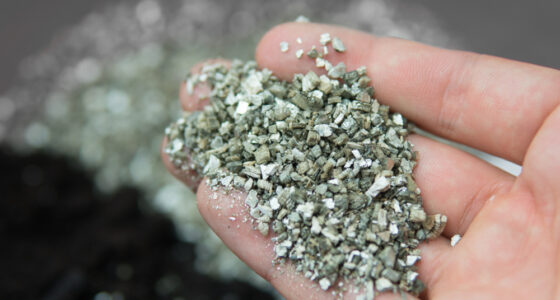Zonolite is the brand name of one of the most notorious asbestos-containing products in history. Made of vermiculite from the W.R. Grace & Company mine in Libby, Montana, it has been linked to thousands of cases of malignant mesothelioma and other asbestos-related diseases and continues to pose a risk to millions of individuals who may encounter it in home attics.

The History of Vermiculite and Zonolite
Like asbestos, vermiculite is a mineral that has been used for decades in construction and consumer materials. It has been used for years in products ranging from concrete for swimming pools to acoustic finishes, from horticultural products to drilling muds. It is best known for its use as a loose-fill attic insulation.[1]
Though generally considered safe, the vermiculite that was mined from the Libby, Montana area was heavily contaminated with asbestos and asbestos-like fibers from a nearby deposit of tremolite-actinolite. Originally owned by E. N. Alley, a businessman who ran the mine under the Zonolite Company name during the early 1900s,[2] Zonolite was sold to W.R. Grace and Co. in 1963. Unfortunately, under that company, the mine’s distribution grew to almost 200,000 tons per year, representing more than half of what was produced globally between 1925 and 1990.
W. R. Grace discontinued its operations in 1990, but not before the product led to significant occupational exposure among local miners, millers, and downstream workers,[1] extended occupational exposure at distribution points throughout the United States and beyond, environmental exposure in the surrounding communities, and consumer exposure in as many as 30 million U.S. homes where the loose-fill attic insulation may have been used.[3]
There is documentary evidence that the Zonolite Company was aware of the risk posed by asbestos as early as 1956 but chose not to tell its employees or consumers. By the time W.R. Grace and Company purchased the mine, people were already beginning to be sick. Internal documents dated from 1965 show that employees had begun reporting lung diseases, and many died. Townspeople in Libby were also suffering from what they called “dust disease,” but when they questioned a mining operator, their concerns were dismissed.[4]
The impact of the asbestos was widespread. While employees were most directly affected, they unknowingly carried the risk of illness from asbestos dust into their homes, sickening their family members in a phenomenon now known as secondary asbestos exposure. The dust from the mines contaminated the soil, land, and forests throughout the area, including baseball fields and playgrounds, and people who lived along the railroad tracks that carried the material away from Libby in open cars were also later diagnosed with asbestos-related diseases.[4]
W.R. Grace’s executives were forced to stand trial in a lawsuit filed by the federal government seeking justice for the people of Libby. The judge overseeing the case called the company’s actions an “inexcusable dereliction of duty” but ultimately determined that the company could not be convicted of violating the Clean Air Act because it had not yet been put into effect. Eventually, the entire area was identified as a public health emergency and was named a Superfund site by the Environmental Protection Agency and underwent years of decontamination.[4] Multiple lawsuits are continuing today, filed by the state of Montana and individual victims against W.R. Grace and many other companies that supported its operations.[4]
The company’s employees and other victims who were exposed to the deadly product filed so many asbestos lawsuits that W.R. Grace and Company, and dozens of its affiliates, were forced to file for Chapter 11 bankruptcy and establish two separate asbestos trust funds valued at over $4 billion to compensate those affected by their negligence.[5]
Zonolite Vermiculite and Mesothelioma
Not all vermiculite is contaminated with asbestos, but most of what was sold under the Zonolite brand was. The tremolite asbestos found in the product is considered to be among the deadliest forms of the carcinogenic mineral and has been linked to pleural plaques, asbestosis, lung cancer, and malignant mesothelioma. Evidence from studies of miners in Quebec demonstrated that very low concentrations of tremolite in ambient air translated into high concentrations in lung tissue, even in those without occupational exposure, and there is an increase in the proportion of mesothelioma risk that is attributable to tremolite.[5]
Those exposed to Zonolite vermiculite are at risk of chronic but non-malignant conditions, including pleural plaques, pleural effusion, and pleural thickening, more serious non-malignant diseases like chronic obstructive pulmonary disease and asbestosis, and malignant diseases including:
- Malignant mesothelioma
- Lung cancer
- Ovarian cancer
- Laryngeal cancer
- Throat and esophageal cancers
- Gallbladder cancer
- Cholangiocarcinoma
Although thousands of those exposed to Zonolite insulation have already been diagnosed with these challenging and deadly illnesses, there are many more who remain at risk. Asbestos diseases have extremely long latency periods, which means that it can take as long as sixty years for symptoms to appear.
More troubling is the fact that even though the product hasn’t been sold for years, there are still millions of homes that may have Zonolite insulation in their attics, putting homeowners and families, as well as those who may do work in their homes, at risk. Because of this, the United States Environmental Protection Agency has issued a warning for homeowners, informing them about what vermiculite is, why it is a concern, how to identify it, and what to do if they determine that the insulation in their home is made from vermiculite. Notably, the agency’s guidance indicates that if homeowners find vermiculite in their homes, they should assume that it comes from Libby and treat it as if it is contaminated with asbestos.[6] The National Institute of Occupational Safety and Health has released similar warnings for those who may be at risk for occupational exposure.[1]
W.R. Grace and Company Asbestos Trust Funds
The trust funds that were set up to benefit victims of asbestos in Zonolite insulation address two different categories of exposure:
- The Zonolite Attic Insulation Trust is designed to educate the public about the dangers of asbestos and provide partial reimbursement for property damage claimants. The monies in the fund are used to defray the cost of asbestos abatement.
- The W.R. Grace & Co. Asbestos Personal Injury Trust provides compensation for individuals who were diagnosed with asbestos-related diseases as a result of exposure to the company’s products as well as its operations.
Were You Exposed to Zonolite Insulation?
The total number of people sickened by exposure to asbestos-contaminated Zonolite insulation remains unknown, as victims are still being diagnosed today. If you worked with Zonolite Insulation, whether as an employee of W.R. Grace and Company or in another capacity, you may be at risk, and the same is true if you lived with anybody who worked directly with the product, if you lived near a W.R. Grace and Company distribution site, or if the product was hidden in your home’s attic.
There are victims who lived far away from Libby, Montana, who recall playing with raw vermiculite materials kept in the yards of the company’s processing facilities as children.[7] All of these individuals and many more are at risk, and if you fall into one of these categories, it’s important that you stay vigilant for the early warning signs of asbestos-related diseases. It’s also imperative that you inform your physician of your history of exposure so that they can include it in your medical records.
Help For Those Diagnosed with Mesothelioma After Exposure to Zonolite Insulation
Being diagnosed with malignant mesothelioma or another asbestos-related disease is a shattering experience that leaves victims uncertain where to turn. While your priority should be seeking high-quality medical attention at one of the nation’s many excellent mesothelioma treatment centers, it is also important that you speak with a mesothelioma attorney as soon as possible to identify the options available to you. Beyond filing claims with one of the W.R. Grace and Company trust funds, you may also be eligible to file a personal injury lawsuit seeking compensation.
An experienced attorney will review your exposure history to identify where and how you were exposed so that they can identify all of those who may have contributed to your exposure. They will also inform you of the important deadlines known as statutes of limitations that you need to know while you’re deciding what the best course of action is for you and your family. The more information you have, the more confidently you can move forward.
References
- CDC Workplace Safety and Health. (N.D.). NIOSH Recommendations for Limiting Potential Exposures of Workers to Asbestos Associated with Vermiculite from Libby, Montana.
Retrieved from: https://www.cdc.gov/niosh/docs/2003-141/pdfs/2003-141.pdf?id=10.26616/NIOSHPUB200314 - Airsafe. (N.D.). Vermiculite insulation contaminated with asbestos?
Retrieved from: https://www.airsafe.net.au/news/vermiculite-insulation-contaminated-with-asbestos/ - Retrotec. (July 18, 2019.). Danger Zone.
Retrieved from: https://retrotec.com/blog/post/zolonite-asbestos-attic-insulation?srsltid=AfmBOorl0iBKFs4Dem1EZs7k2szZefZMI0ZKZoLgK-VHByCbrgqudeym - Intermountain Histories. (N.D.). Run Like Hell: The Libby Asbestos Story.
Retrieved from: https://www.intermountainhistories.org/items/show/382 - NIH, National Library of Medicine. (Dec. 31, 1991.). Health effects of tremolite. Now and in the future.
Retrieved from: https://pubmed.ncbi.nlm.nih.gov/1809162/ - EPA. (N.D.). Protect Your Family from Asbestos-Contaminated Vermiculite Insulation.
Retrieved from: https://www.epa.gov/asbestos/protect-your-family-asbestos-contaminated-vermiculite-insulation - Missouri Department of Health and Senior Services. (September 2006.). Health Consultation Summary Former Zonolite/W.R. Grace Facility – St. Louis.
Retrieved from: https://health.mo.gov/living/environment/hazsubstancesites/pdf/hcsumzlfs.pdf

Terri Heimann Oppenheimer
WriterTerri Oppenheimer has been writing about mesothelioma and asbestos topics for over ten years. She has a degree in English from the College of William and Mary. Terri’s experience as the head writer of our Mesothelioma.net news blog gives her a wealth of knowledge which she brings to all Mesothelioma.net articles she authors.

Dave Foster
Page EditorDave has been a mesothelioma Patient Advocate for over 10 years. He consistently attends all major national and international mesothelioma meetings. In doing so, he is able to stay on top of the latest treatments, clinical trials, and research results. He also personally meets with mesothelioma patients and their families and connects them with the best medical specialists and legal representatives available.


